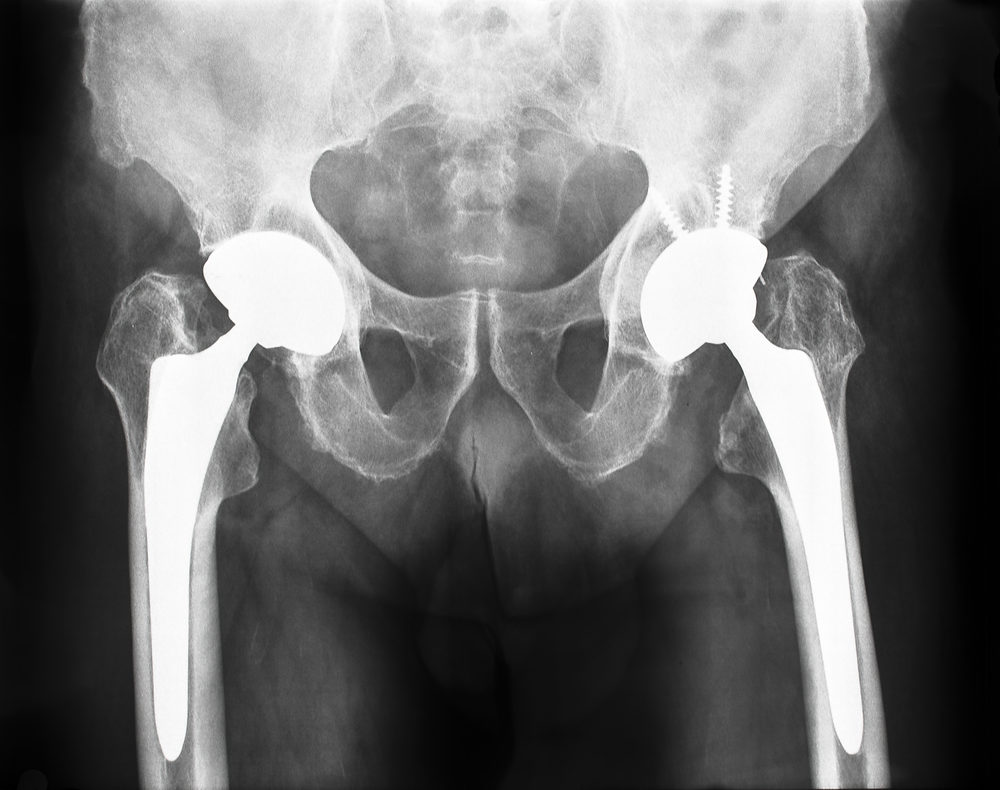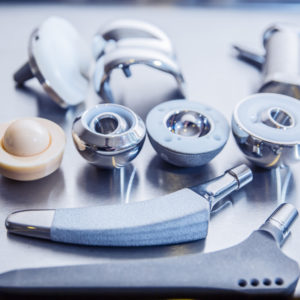DePuy Pinnacle Hip Failures and Revision Surgery Rates Unacceptably High: Study

The findings of a new study highlight the serious risk of problems with metal-on-metal hip replacements used over the past decade and the propensity of the devices to fail prematurely, suggesting that the revision rates seen with the DePuy Pinnacle hip system is “unacceptably high”.
Metal-on-metal hip replacements have been sold by a number of different manufacturers in recent years, featuring a metal femoral head that rotates within a metal acetabular cup.
Unlike other artificial hip designs, which typically feature metal-on-ceramic or metal-on-plastic, the metal-on-metal hips have been found to release microscopic metallic debris as the parts rub against each other. This has been linked to reports of loosening and failure, often within a few years after the artificial hip is implanted, and thousands of hip replacement lawsuits have been filed against manufacturers by individuals who experienced a catastrophic failure.

Learn More About
Lawsuits are being reviewed for several different dangerous and defective hip replacement systems.
Learn More About this Lawsuit SEE IF YOU QUALIFY FOR COMPENSATIONIn a study published last week by the medical journal BMJ Open, researchers looked specifically at outcomes associated with the DePuy Pinnacle metal-on-metal hip replacement system, which was one of the earliest metal-on-metal designs introduced, and was used as the basis for some other subsequent implants.
Researchers from the U.K. looked at 434 patients, who received 489 DePuy Pinnacle 36 mm hip implants. Of those who received the implants, 243 were female and 191 were male.
Over a period of 89 months, researchers found that 71 DePuy Pinnacle hips failed and were removed due to problems, giving the Pinnacle a revision rate of 16.4%. Most of the removed implants showed signs of taper junction failure.
An analysis of the explanted artificial hips found that many had bearing diameters that were larger than specified. The researchers also found that those placed in women and those placed in more recent years carried a greater risk of failure.
“This device was found to have an unacceptably high revision rate,” the researchers said. “A significant number of explanted components were found to be manufactured with bearing diameters outside of the manufacturer’s stated tolerances. Our findings highlight the critical importance of hitherto unrecognized variations in device production.”
DePuy Pinnacle Hip Lawsuits
The findings came a little more than a month after a Texas jury ordered Johnson & Johnson and it’s DePuy subsidiary to pay $500 million to five plaintiffs who sued the companies for manufacturing and designing defective Pinnacle hip implants. The verdict included a combined $140 million in compensatory damages and another $360 million in punitive damages, designed to punish the manufacturers for recklessly endangering consumers.
There are more than 8,300 similar DePuy Pinnacle lawsuits filed against DePuy and Johnson & Johnson in federal courts nationwide. All of the claims have been centralized as part of a federal multidistrict litigation before U.S. District Judge Ed Kinkeade in the Northern District of Texas.
All of the complaints raise similar allegations, indicating that the DePuy Pinnacle hip replacement was defectively designed, prone to fail and cause metal blood poisoning, known as metallosis, often resulting in the need for risky revision surgery to have the hip implant removed or replaced after just a few years.
Johnson & Johnson received a defense verdict in the first DePuy Pinnacle trial to go before a jury in 2014, after the manufacturer argued that the plaintiff’s implant was improperly positioned by the surgeon. However, the jury in this case concluded that each of the plaintiffs’ injuries were caused by defects and problems with the DePuy Pinnacle hip implant design.
Metal-on-Metal Hip Implant Problems
Metal-on-metal hip replacements have been sold by a number of different manufacturers in recent years, and most of the devices on the market were introduced through the controversial fast-track 510(k) approval process, which only required that the device be a “substantial equivalent” to an already existing device approved by the FDA. However, the snowball effect of the substantial equivalence test has allowed many devices now considered unreasonably dangerous and defective to be implanted in thousands of Americans.
Amid increasing concerns about the safety of the implants, the FDA released new guidance for metal-on-metal hip replacements in January 2013, indicating that doctors should only use the design if other artificial hip implants are not appropriate. The agency also determined that future metal-on-metal hip designs will be required to undergo extensive human clinical trials before they will be approved.
Johnson & Johnson previously agreed to pay more than $2.4 billion to settle DePuy ASR hip lawsuits, resolving about 8,000 cases brought by individuals who required revision surgery after receiving this newer design that was recalled from the market.
Although the DePuy ASR design was based on the Pinnacle hip, Johnson & Johnson has failed to negotiation a large settlement for DePuy Pinnacle hip lawsuits, previously indicating that it intends to defend the cases at trial.
Get more articles like this sent directly to your inbox.
"*" indicates required fields






0 Comments